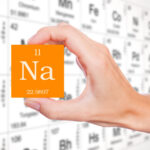International Day against Nuclear Tests is an annual observance on August 29. The day was established by the United Nations General Assembly at their 64th session on December 2, 2009. Nearly 2000 nuclear weapons tests have taken place since the first one on July 16, 1945. The side effects and dangers of nuclear energy testing to human life were dismissed in the early days, but the magnitude of its destructive nature has been proven time and time again in history. Nuclear weapons are volatile and the world can do without it.
History of International Day against Nuclear Tests
At the 64th session of the United Nations General Assembly on December 2, 2009, the unanimous adoption of resolution 64/35 declared August 29 as the International Day Against Nuclear Tests. The crux of the resolution was that “every effort should be made to end nuclear tests in order to avert devastating and harmful effects on the lives and health of people” and that “the end of nuclear tests is one of the key means of achieving the goal of a nuclear-weapon-free world.”
The initiation for this day was by the Republic of Kazakhstan, selecting August 29 as the date of the observance to align with the shut down of the Semipalatinsk Nuclear Test site on the same date in 1991.
The inaugural observance of the International Day Against Nuclear Tests was in 2010. Every year, massive efforts go into arranging activities across the world; including conferences, symposia, competitions, publications, media broadcasts, lectures, and more. Many sponsors, government-level agencies, and civil society organizations have aided the cause and campaigned for the complete ban on nuclear testing.
International Day against Nuclear Tests timeline
Leo Szilard conceives the idea for the nuclear chain reaction.
The cities of Hiroshima and Nagasaki in Japan are nuclear bombed, the devastating side effects of which exist to this day.
Explosions at the Chernobyl Power Plant in 1986 resulted in the death of 30 workers and the relocation of 300,000 residents.
The Semipalatinsk Nuclear Test site is closed.
Through the adoption of resolution 64/35, the United Nations General Assembly declares August 29 as the International Day Against Nuclear Tests.
International Day against Nuclear Tests FAQs
Which country tested a nuclear bomb recently?
The latest nuclear test was carried out by North Korea in September 2017.
When did the UN declare the observation of the International Day Against Nuclear Test?
The International Day for the Total Elimination of Nuclear Weapons was observed for the first time in September 2014.
Which President signed the Nuclear Test Ban treaty?
President John F. Kennedy signed the Nuclear Test Ban treaty.
How to Observe International Day Against Nuclear Test
Read up on it
Nuclear bombs and their use are well-known in history. But not many people are informed on nuclear testing and its outcomes. Read about the tests and first-hand accounts from people in the vicinity who sustained devastating after-effects.
Join a local campaign
Campaigning by civil society to bring about policy changes at a large-scale level is organized on International Day Against Nuclear Tests. Participate and raise your voice against nuclear testing.
Attend a seminar
The United Nations and other organizations host numerous seminars, conferences, and dialogues every year on this day. Attend one that is near you, or a live session online.
5 Facts About Nuclear Weapons
The Chernobyl Incident
The explosions at the Chernobyl power plant radiated 100 times the radiation of the atom bombs dropped on Hiroshima and Nagasaki during World War 2.
The most powerful nuclear weapon ever
Russia’s Tsar Bomba is the single most powerful weapon assembled by man, with a mushroom cloud 25 miles wide and 40 miles high.
Removing outer clothing
90% of radioactive material following a nuclear disaster can be disposed of by removing one’s outer clothing.
Volatile situations
Japan has had three nuclear power plant accidents since 1999.
Rethinking nuclear energy
After the nuclear disaster in Japan in 2011, many countries are heading towards alternate sources of energy, with Germany planning to close all its reactors by the year 2022.
Why International Day against Nuclear Tests is Important
It emphasizes the dangers of Nuclear testings
Throughout history, nuclear testing has been exposing communities to nuclear radiation and radioactivity, the results of which have been disastrous.
Moving towards better sustainable energy
Nuclear energy isn't limited to bombs. Nuclear power plants are a source of energy in some countries around the world, and the volatility of nuclear energy needs to be seriously considered so a shift is made to sustainable sources of generating power.
For a better tomorrow
A world without nuclear power is utopian, and will definitely lead to better dialogue between countries instead of depending on warfare.
International Day against Nuclear Tests dates
| Year | Date | Day |
|---|---|---|
| 2025 | August 29 | Friday |
| 2026 | August 29 | Saturday |
| 2027 | August 29 | Sunday |
| 2028 | August 29 | Tuesday |
| 2029 | August 29 | Wednesday |















